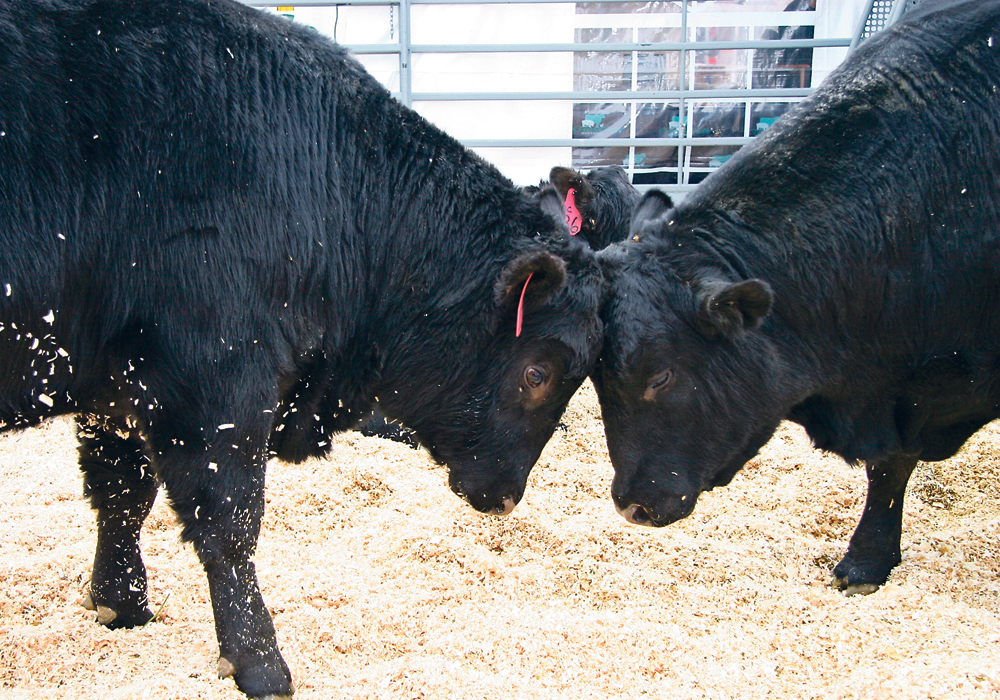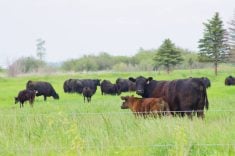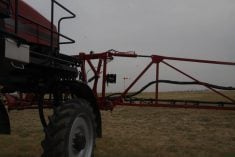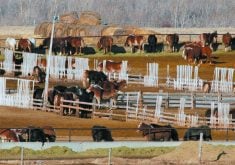Expected progeny differences can ease bull buying, but producers must first determine their breeding objectives
Using statistics like expected progeny differences can make the job of buying a new bull easier.
“Expected progeny differences are the best estimate we have in terms of how a bull or a cow’s future progeny will perform on average compared to that of another potential parent,” said Matt Spangler, beef genetics professor at the University of Nebraska.
Adding a DNA test called genotyping increases the accuracy of an EPD before a bull ever has offspring, he said in a recent webinar sponsored by the National Cattlemen’s Beef Association.
Read Also

House ag committee to undertake several studies
The House of Commons standing agriculture committee has set its agenda for the coming months. Members began the fall sitting with a two-hour update on international trade
Expected progeny differences are generated when an animal’s own performance is combined and properly weighted, along with the performance of relatives (progeny, parents, full and half siblings) and all genetic relationships. It is the best estimate of how a bull or cow’s future progeny will perform, on average compared to another bull, cow or the breed average for a given trait. Studies have shown that using EPDs are seven to nine times more effective than selecting based on actual phenotypes.
It is critical to understand how to interpret EPDs as well as knowing breed averages and percentile ranks to identify potential sires that fit an individual program.
Producers need to focus on traits that are economically relevant to them, taking into account the climate and other factors affecting an animal’s potential, said Jared Decker, beef genetics specialist at the University of Missouri.
Many commercial producers want calving ease, so they select for low birth weights to reduce calving problems. However, birth weight does not have a direct revenue source or cost associated with it.
Birth weight is an indicator trait for calving ease and explains 36 to 64 percent of calving ease differences between animals, said Spangler.
A selection index is also available. This is a combination of EPDs where each trait is weighted by its economic importance. They are expressed in dollar amounts.
“It is important, when using selection indexes, that you think about what your breeding objective is. What is your genetic plan for your cow herd and how are you marketing those animals?” he said.
The selection indexes are designed to simplify things and focus decisions on profitability.
For example, when looking for a bull to use on heifers, the selection decisions may be different than which sires to use on cows.
There are other genetic effects that need to be considered when selecting sires, said Bob Weaber, beef cattle specialist at Kansas State University.
“It is easy to get drawn into individual animal selection and forget about the importance of heterosis or crossbreeding,” said Weaber.
Maternal heterosis has power.
“We want cows that fit into the production environment combined with maternal traits to fit that production environment,” he said.
“Maternal heterosis accounts for about two-thirds of the economic benefit of crossbreeding. If you are building a crossbreeding system that doesn’t include crossbred cows, you are missing about two- thirds of this economic advantage. This could be about $150 advantage per year per cow,” he said.
Breed complementarity is another source of value.
No one breed does everything best, so it is a good idea to combine breeds to build calves that excel in different aspects of the marketplace, whether it is the weaned calf market or a grid-based marketing system where cattle are evaluated and priced individually at the packing plant.
Keep the system simple.
“Choose a system that will work with your inputs without being too complex to manage,” Weaber said.
“For a small producer with 25 cows, a four-breed, self-developed composite breeding system is likely not very successful. It will take a long time to build that with a very limited gene pool moving forward,” he said.
Large operators may find a three-breed rotational system with 800 to 1,000 cows is simple to implement and easier later to sort calves for the marketplace.
The simpler the system, the more consistency, longevity and sustainability it has.
Improvement in a cow herd with a structured cross-breeding program leads to efficiency but it takes time.
“How willing are you to spend time doing the $500 an hour work associated with making the high level breeding and management decisions versus maybe you have a job in town and the cows are sideline?” Weaber said.
He advises selecting bulls based on EPDs and picking replacement females based on heterosis. Remember that their potential can be limited by available forage and local climates.
Weaber said there are several steps for successful crossbreeding:
- clear breeding objectives
- a mating system with those goals in mind
- choosing breeds that fit into the system’s goals; picking breeds for the core traits they are known for is a good rule of thumb because breed complementarity is important
- choosing the right bulls; identifying the bulls within the different breeds that have been selected in the crossbreeding system is really the second step in the strategy of building a breeding system
When buying a new bull, get the breeder’s sale catalogue well in advance and do the homework to understand the accuracy of the EPDs and indexes provided, said Spangler.
“Indexes work but like any other tool you have to use the tool appropriately,” he said.
Consider if the resulting calves are meant for the beef market or for replacement heifers because different indexes and selection tools are needed.
Also, remember as more data is collected on a bull, the EPDs may change.
“Make your selection decisions today based on the best information you have today,” he said.
Don’t jump at trends and change an entire program, but be ready to take advantage of circumstances like changing market conditions.
For further examples of how to read EPDs, visit www.beefresearch.ca/blog/epds/.


















